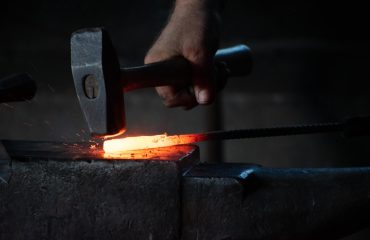Steel. A word synonymous with strength, durability, and resilience. But beyond its inherent properties lies a world of innovative applications, solving complex engineering challenges across diverse industries. This blog post delves into compelling case studies, showcasing the versatility and ingenuity of steel solutions in action.
1. Skyscrapers: Reaching New Heights with Steel’s Strength
The iconic skyline of modern cities is a testament to steel’s ability to defy gravity. Skyscrapers, those towering symbols of ambition and architectural prowess, rely heavily on steel’s high tensile strength and flexibility. Consider the Burj Khalifa, the world’s tallest building. Its intricate steel frame, a marvel of engineering, supports unimaginable weight and withstands extreme environmental conditions. The design incorporates high-strength steel, optimized for weight reduction without compromising structural integrity. This not only minimizes the building’s environmental impact but also reduces construction costs. Other notable examples include the Shanghai Tower and the One World Trade Center, each showcasing unique steel structures designed to meet specific challenges related to wind load, seismic activity, and fire safety. The precision engineering involved in these projects underlines steel’s critical role in pushing the boundaries of architectural design.
2. Bridges: Spanning Gaps with Steel’s Resilience
Bridges, crucial arteries of transportation networks, often face immense stresses from traffic, weather, and seismic activity. Steel’s inherent ability to withstand these forces makes it an ideal material for bridge construction. The Golden Gate Bridge, a global icon, is a prime example. Its suspension design, utilizing high-tensile steel cables and a robust steel deck, has withstood decades of exposure to harsh marine environments and intense winds. Similarly, the Akashi Kaikyō Bridge in Japan, one of the longest suspension bridges in the world, demonstrates the remarkable strength and durability of steel in seismic zones. Modern bridge designs increasingly incorporate advanced steel alloys and construction techniques, such as high-performance steel and innovative welding methods, to further enhance their lifespan and resilience. These innovations allow for longer spans, lighter structures, and increased safety margins.
3. Infrastructure: Building a Sustainable Future with Steel
Steel plays a pivotal role in building sustainable infrastructure. From railway tracks and pipelines to stadiums and industrial facilities, steel’s durability and recyclability make it a responsible choice. The construction of high-speed rail lines, for instance, relies heavily on steel for its track beds, bridges, and supporting structures. Steel’s ability to withstand high loads and vibrations ensures the smooth and efficient operation of these crucial transportation systems. Furthermore, steel’s recyclability reduces environmental impact. Steel can be recycled repeatedly without losing its properties, making it a sustainable alternative to materials with higher carbon footprints. The ongoing development of sustainable steel production methods further reinforces steel’s role in creating environmentally responsible infrastructure.
4. Automotive Industry: Steel’s Contribution to Safer and More Efficient Vehicles
The automotive industry relies heavily on steel’s strength and formability to create safe and efficient vehicles. Advanced high-strength steels (AHSS) are increasingly used in car bodies to enhance crash safety and reduce vehicle weight. These steels offer superior strength-to-weight ratios compared to conventional steels, leading to improved fuel economy and reduced emissions. Furthermore, the precise manufacturing processes associated with steel allow for complex shapes and designs, contributing to the aesthetics and functionality of modern vehicles. Innovations in steel production, such as tailored blanks and laser welding, further enhance the efficiency and safety of automotive components.
5. Offshore Structures: Withstanding the Rigors of the Marine Environment
The harsh conditions of the offshore environment demand exceptional material resilience. Steel’s ability to withstand corrosion, extreme weather, and immense water pressure makes it the preferred material for offshore platforms, wind turbines, and pipelines. These structures often face significant challenges, including strong currents, wave action, and potential impacts from floating debris. Specialized steel alloys, such as corrosion-resistant steels and high-strength low-alloy steels, are used to ensure the longevity and safety of these vital installations. The design and construction of these structures require meticulous engineering and advanced fabrication techniques to ensure they can withstand the demanding offshore environment for decades.
In conclusion, steel’s versatility and strength continue to drive innovation across numerous industries. The case studies presented here offer just a glimpse into the vast applications and remarkable impact of steel solutions. As technology advances, we can expect even more innovative uses of steel, further solidifying its position as a cornerstone material for future engineering marvels.
SEO Tags:
Steel solutions, case studies steel, engineering applications steel, sustainable steel, high-strength steel




